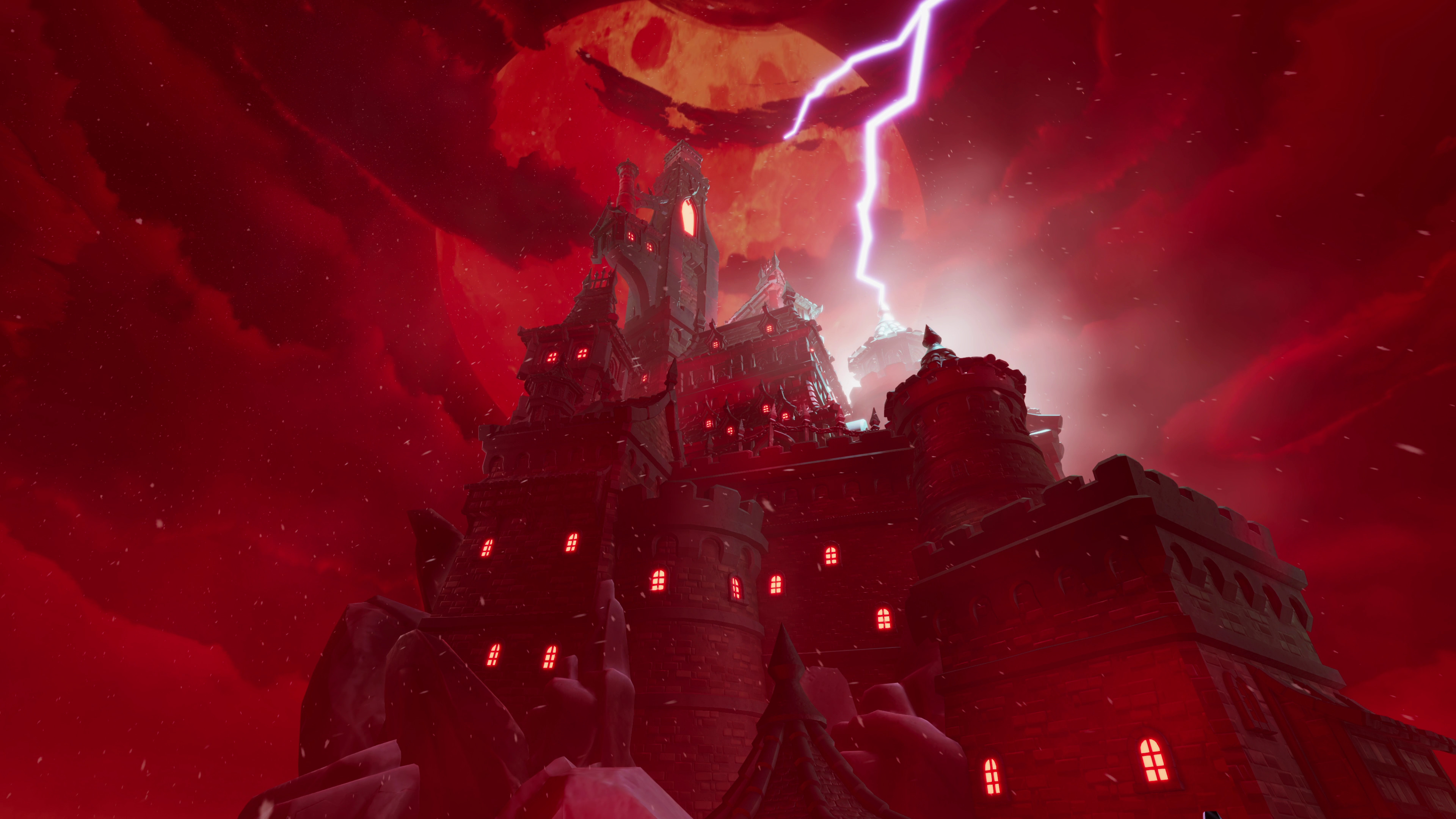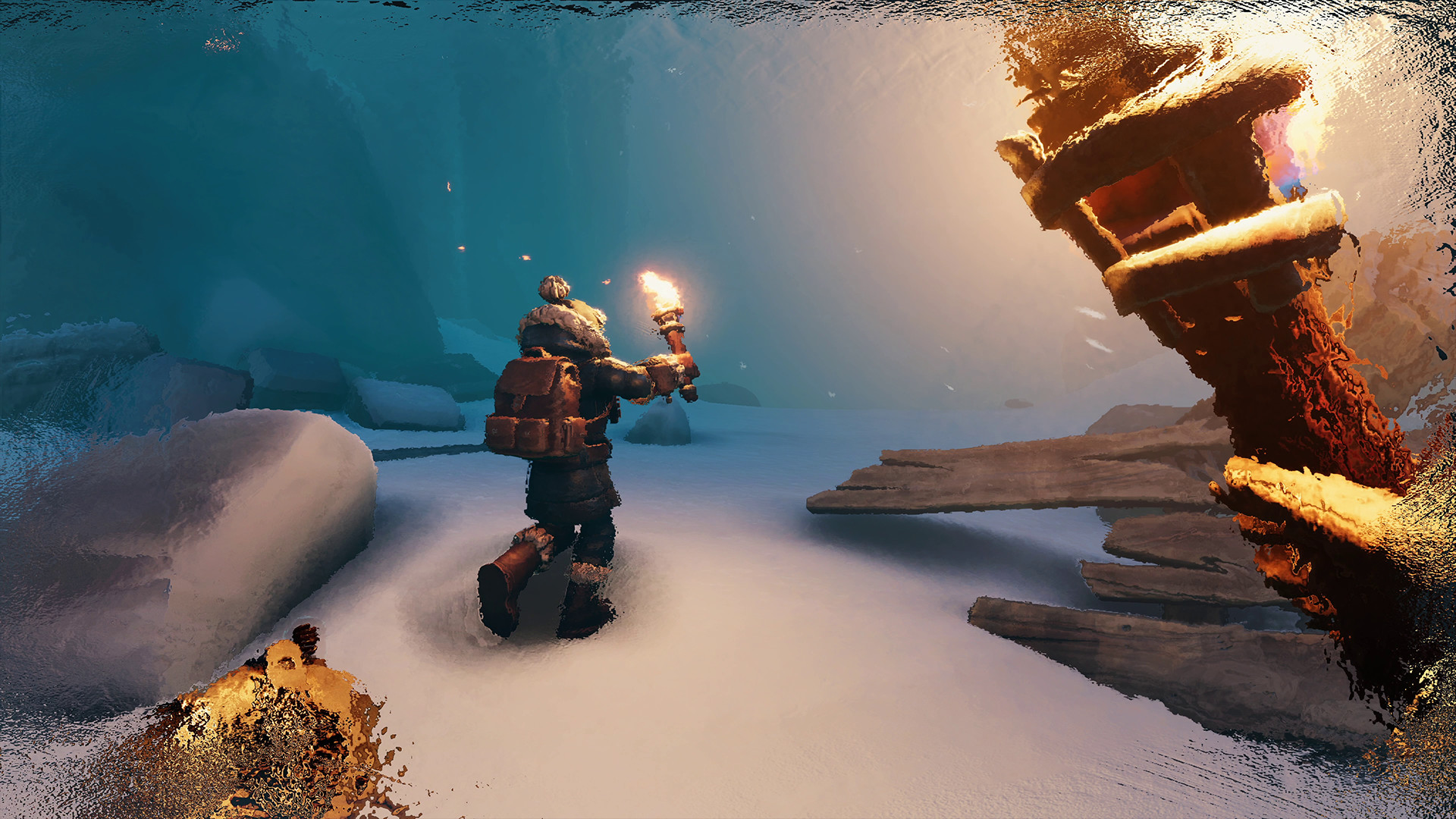How a team of Dutch escape artists is charting its future by tackling the mayhem in its past
Interview | Edge magazine goes behind the scenes with Total Mayhem Games

Crammed into a computer shop in Rotterdam, Benjamin van Hemert waits anxiously. It's February 2017, and over a hundred people have arrived for a launch party, celebrating the culmination of six months' work on a game design course. Van Hemert and his team are all still students, but they're proud of what they made and are keen to put it out into the world – and specifically onto Steam. The team have opted for a free release, in the hope that the low barrier to entry will help net them the 1,000 downloads needed for a passing grade.
Less than two hours later, Van Hemert's mind has been blown – We Were Here has already racked up seven times their target. "That's when I started feeling, OK, maybe I should've asked for money for this," he smiles. Making games had been a dream for Van Hemert since he was first given a Game Boy as a toddler; he'd taken game design as a minor, just one part of his wider multimedia degree. But this small success could change all that. "This might actually be a step into the games industry," he remembers thinking. And more than that, We Were Here's success provided a launchpad for an entire studio, one that quickly made its name as the go-to for virtual escape rooms.
Yet despite the logic underpinning its games, the 'Mayhem' part of the studio's name is apt, betraying the chaotic work environment that defined its early years. That resulted in a six-month production pause in 2023 after most of the team had completed work on The FriendShip, as the former students and the team that had grown up around them tried to right the ship. Now, fresh off the launch of that title, the first in a planned series of bite-sized releases, we find a studio in the midst of transformation, overhauling its structure, workflow and culture. "Energy and excitement have returned to [the studio]," executive producer Geoff van den Ouden tells us.
Or anywhere

Few people have better insight into the studio's evolution than Van den Ouden. A former lecturer at the Rotterdam University Of Applied Sciences, in 2006 he co-founded a game design and development module – the very same one to which Van Hemert and co would sign up a decade later. After a six-week initial bootcamp period creating a 2D mobile game, this team of 15 students began brainstorming their end-of-term project. "We looked at the requirement list for how to get the highest score in the minor and we just started ticking off boxes," Van Hemert laughs.
"Multiplayer: check. Online multiplayer: check. Virtual reality: sure, check, let's do that too!" It's an admirably gamelike approach to scholarly attainment, and one that soon collided with another piece of campus inspiration. Van den Ouden recalls walking down the empty hallways of the university after a long day, only to find laughter and light pouring out of one of the classrooms assigned to his students. The cause of their late night? Keep Talking And Nobody Explodes, a cooperative game in which one player defuses a bomb while their partner attempts to read instructions from a physical manual. The team landed on their own particular fusion: a kind of virtual escape room, played in first-person, which requires two partners to communicate verbally in order to solve puzzles of which they can each see only one half.
Van Hemert and his team tested out puzzles in person, locking participants in separate classrooms with winter coats and walkie-talkies – an image that will be familiar to anyone who has played the We Were Here games. Similar tricks were employed when showing their eightweek prototype to professional game developers, with students hiding outside to knock on the door at a key point in the demo. Van den Ouden had reservations over the scope of the project, but couldn't help but be impressed. "We wanted to make projects that could live up to real-world [standards]," he says of his course. "This was the first team that really believed in their own project." After months of discussion post-launch, and with the encouragement of their teachers, six members of the original student team decided to found Total Mayhem Games in 2017. "It was the first time that we said to students: don't graduate," Van den Ouden says. "'You now have momentum, you have a name, your downloads are increasing every single day – you need to do something with this. If you're going to wait six months, your moment is gone.'"

This feature originally appeared in Edge Magazine. For more fantastic in-depth interviews, features, reviews, and more delivered straight to your door or device, subscribe to Edge.
Missing the majority of their original collaborators, including their 2D artists, the six set up shop in a rented basement beneath a lawyer's office, living off funds raised via friends and family. "We had to sneak up into the lawyer's office to quickly go to the bathroom and then sneak back down – we didn't even have front-door keys," Van Hemert recalls. "We lived like rats in the building." Despite these inauspicious surroundings, the team soon got to work on a sequel, brainstorming new puzzles to accompany unused ideas from the first game. But without the rigid structure and timelines imposed upon them by their lecturers, they lacked discipline, an issue compounded by their rapidly dwindling funds. "Looking at your wallet emptying, being a broke student living off student loans – which keep piling up – and you haven't even finished graduating yet," Van Hemert remembers. "It was scary."
Weekly digests, tales from the communities you love, and more
We Were Here Too was released almost exactly one year after the original game. Not that its creators had much of a chance to celebrate, however, polishing the game until an hour before release and leaving their own launch party early so they could fix bugs. Yet the sequel delivered on the potential of We Were Here in at least one crucial way: it wasn't free to download. "It started generating the funds we needed to keep going," Van Hemert says. "That was an insane morale boost." ffice in Rotterdam, adding a handful of employees to their ranks. Creative director Ruud Renting initially joined the studio as a 3D artist at the beginning of development on We Were Here Together, a role that has only expanded with time: his responsibilities now include animation, writing and voice acting. As with many others at the studio, this is Renting's first professional game development job, which he reckons has lent the group a helpful outsider perspective. "You're not bound by these rules that are taught in school," he says. "We had no idea, so why not just do what we think is cool? That's basically how we always try to do it."
It paid off, Together's launch paving the way for yet another growth spurt. The team's headcount grew to 18 as it prepared for its most ambitious project to date, We Were Here Forever. "Both our games and our studio grew exponentially – we kept doubling ourselves," Van Hemert says. "We wanted [Forever] to be even better, even greater." This led to some of the series' most creative puzzles, ranging from macabre puppet dioramas to labyrinths of interlinking portals. "Every time you enter a new room, we have to make a completely new game," Van den Ouden says. "There are new rules, a new challenge – everything is new." But even as they swap war stories about failed puzzle concepts or lament the challenges of asymmetric game design, our interviewees light up with enthusiasm when discussing their creative process. Van Hemert sums up the aim simply: "We want people to be dazzled."
Beneath the surface

"The daily way in which you communicate and do things with your colleagues is way more important than the product"
Underneath all these advancements, though, remained the horizontal management structure inherited from the studio's beginnings. "We needed overhead, planning, actual direction, [which] we lacked," Van Hemert admits. After working with the studio on and off during its early years, Van den Ouden formally joined the team during the development of We Were Here Together, taking a more direct role in overseeing his former students. Nonetheless, Renting describes the development of Together as "utter chaos", something made manageable only by the studio's small headcount and the limited scope of its games at the time. By the time it was working on Forever, things were rather more complicated. "At some point, this structure doesn't work any more," he says. "You need to start creating a hierarchy, otherwise it breaks down. Nobody had any experience running this whole thing." These problems were compounded by the arrival of COVID, and the resulting lack of face-to-face interactions, while the boundary between the developers' work and personal lives became increasingly blurred. "We had a need for managers, for human resources people," Renting says, "but that wasn't implemented."
Renting speaks to us three months after returning from a year-long burnout period (something he partially attributes to living a "rockand-roll lifestyle" during the pandemic). The studio he has rejoined has undergone some significant changes during that time, having appointed a new board in early 2023. Each department now has dedicated managers and directors, Van den Ouden tells us, while HR professionals and a coach were brought in for consultations. "We paused production for six months to redefine our processes," he says. "This period wasn't idle – it focused on optimising [our] workflow, communication, and documentation." As the studio prepares for another relocation, this time to a new office space in central Rotterdam, Total Mayhem has found a fresh focus. "The daily way in which you communicate and do things with your colleagues is way more important than the product," Renting says. "We really want to take care of each other."
With a solid foundation under its feet for the first time, the team has returned to its roots in other respects. The FriendShip, the first instalment in a new We Were Here Expeditions subseries, stripped the lengthy campaign of Forever down into something shorter and more streamlined, and was released as a standalone freebie on PC and consoles, at least for a limited time. And so, more than six years on from that pivotal launch party in Rotterdam, Van Hemert once again found himself watching his team's game become an overnight sensation, surpassing three million downloads within four days of release. And while there's no lack of ambition for the future – Renting is dead set on further expanding the universe of We Were Here, a process that began with a live-action YouTube series released alongside Forever – Total Mayhem's real goal is to continue exploring the particular niche its founders first stumbled across in their student days. "This is what we do," Renting says. "We do it really well, we keep doing it better and better, and we love doing it."
This feature originally appeared in Edge magazine. For more fantastic features, you can subscribe to Edge right here or pick up a single issue today.
Niall O'Donoghue is a freelance writer and editor, with bylines across the industry including Edge magazine, The Washington Post, The Loadout, GamesIndustry.biz, RPS, and the Irish Times.


